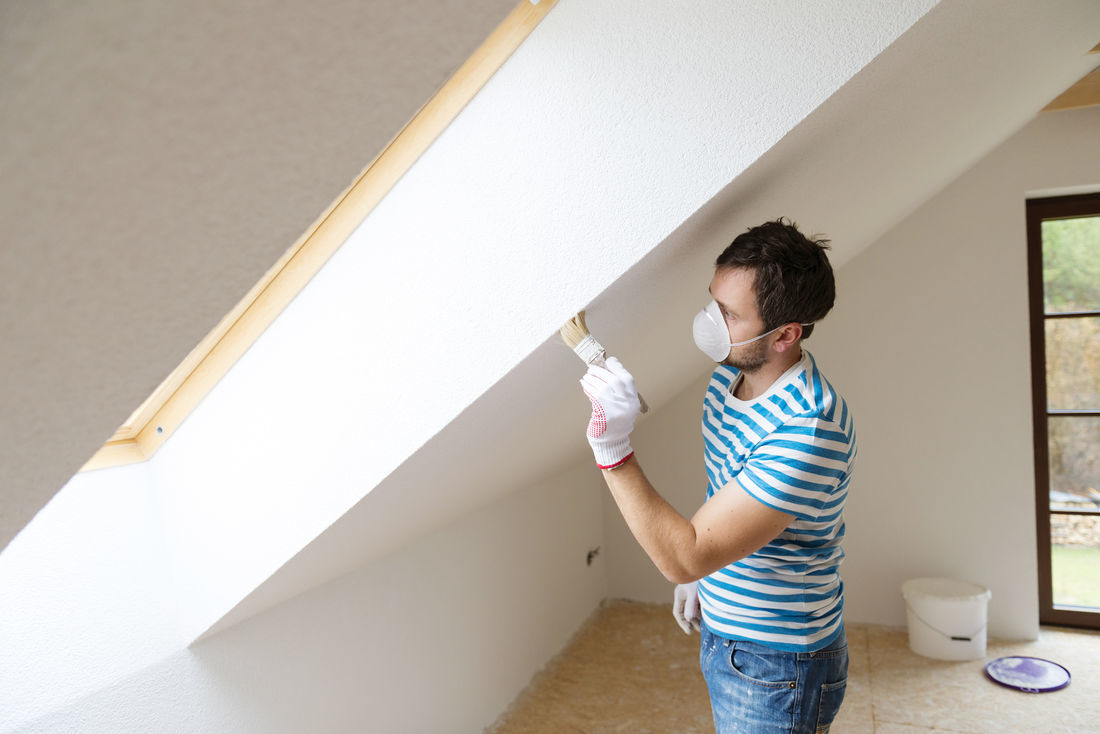Yes, it can be hot and uncomfortable wearing a face mask when painting. But it’s really important to do so, for particular paint job types, as scientific studies tell us the side effects of paint exposure can be really nasty.
Below we’ll explore:
- What are the health risks associated with painting?
- Some of the nasty ingredients commonly found in paint
- How to choose the right mask
How Painting without a Mask Can Impact Your Health
Once the paint has been allowed to dry on the wall it’s perfectly safe, but, as painters, we deal with the wet product, plus putty dust and paint stripping chemicals. Wearing PPE, like a mask and long sleeved shirt, when spraying, stripping or sanding, significantly reduces your exposure to paint products. It might just mean you avoid serious health problems too.
And the health problems can be serious, here are a few examples:
- Bladder Cancer - painters are 30% more likely to develop bladder cancer than the general population, according to an analysis published in Occupational and Environmental Medicine in 2010. The authors relied on comprehensive published evidence for their analysis and found the cancer risk increased the longer the individual worked as a painter.
- Children with Autism Spectrum Disorder – a 2019 study, also published in Occupational & Environmental Medicine, found women who were exposed to ‘common paint chemicals at work’ were more likely to give birth to children with autism spectrum disorder. The study took into account smoking history, alcohol habits and the woman’s age at birth but still found the association persisted. The study’s authors were quick to point out this did not prove that exposure to paint chemicals causes autism, but the association was nonetheless undeniable.
- Lung Cancer – numerous scientific studies of painters have shown a significant increase in the likelihood of lung cancer in painters compared to the general population.
And that’s just conditions we know are linked to exposure to paint chemicals!
According to Volume 100 of the IARC Monographs, A Review of Human Carcinogens published in 2012:
“No particular agent could be identified as the specific cause of the excess lung and urinary bladder cancers…[in painters and] there is little information from epidemiological studies on the risk associated with the use of paint pigments that are known lung carcinogens, such as chromium and cadmium.”
In other words, we don’t yet know the full extent of the harm caused by different substances used in paints. Therefore it surely pays to be careful and to wear a mask whenever spraying, stripping or sanding back.
Some of the Nasty Culprits Found in Paints
Literally thousands of chemical compounds are used to make different types of paint. If you’re stripping or sanding older properties you could be exposed to even more toxic ingredients than what’s found in modern paints. Here’s a few of the nasties:
- Benzene – is a known carcinogen found in oil-based paints. Benzene is a Volatile Organic Compound (VOC) and we know that breathing in VOCs can cause headaches and dizziness as well as damage to organs and the nervous system. Wet or drying oil-based paints emit high levels of VOCs.
- Crystalline Silica – the inhalation of silica dust can cause silicosis – lung disease. Latex paints, often used for concrete, contain silica and some painter’s putty products state they may contain silica.
- Lead – it’s classed as a poison and exposure to it can cause kidney and nervous system damage among other problems. Lead paint was used in Australia up until 1970 and if you’re removing lead paint by dry sanding or scraping, you are creating fine particles of lead which can be inhaled, so a mask is vital!
How to Choose the Right Mask
You need the right mask for the right job, and you need a good quality mask. To that end, always buy your masks from a reputable supplier, ensure they meet Australian Standards, as specified on the package, and make sure the mask you buy is listed as being suitable for the job you want to undertake.
It’s a good idea to read reviews of different products before purchasing to make sure the mask you select is a) suitable for your needs and b) gives you the highest possible protection. We also suggest you opt for a mask that has a mouldable insert so you can fit it securely to your facial features and one that has double straps because they create a better seal. It’s also a good idea to shave that beard!
Want to avoid the hazards of paint exposure altogether? Contact the professionals at W and M Painting Services today.

